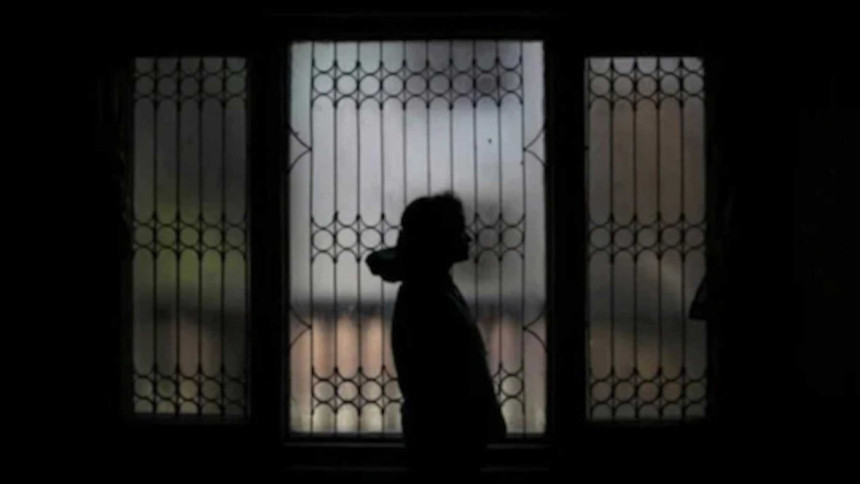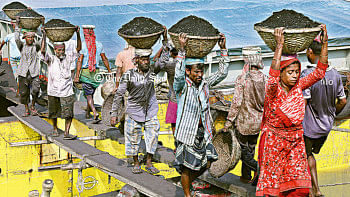Why the lax attitude in bringing traffickers to justice?

Human trafficking continues to plague Bangladesh. As recently as October this year, the Rapid Action Battalion (Rab) arrested 11 traffickers belonging to two rackets—one of them being "Dance Club." The elite force also rescued 23 trafficking victims from three "safe houses" across Dhaka.
One of the arrested happens to be Kamrul Islam alias Jalil alias DJ Kamrul alias Dance Kamrul, a trafficker who lured unsuspecting girls with promises of lucrative jobs abroad, posing as a dance club owner. He had earlier been arrested in April 2019 for trafficking a woman to India, but he was released after only three months in jail.
Prior to this spate of arrests, in June, law enforcement agencies arrested 11 suspected human traffickers, who had been poaching girls and women using the social media platform TikTok. Later, Rab stated that Rafizul Islam Ridoy, also known as TikTok Ridoy, was the leader of the racket, and used to entrap girls with promises of making them TikTok models. However, the girls were trafficked to Southern India as sex workers. The TikTok gang came under surveillance after a video of sexual assault on a woman in India went viral on social media. She was one of their victims.
In the past years, multiple trafficking rackets have been busted by the law enforcement agencies, yet the number of human trafficking victims kept spiralling. Citing NGO reports, this daily revealed that in the last 10 years, about 500,000 women and girls from Bangladesh—aged between 12 and 30 years—have been trafficked to India alone. Apart from India, trafficking hotspots include countries in the Middle East, North Africa, and East Asia, where Bangladeshi men, women and children are smuggled.
Given the upward trend in human trafficking, we need to take a closer look at the contexts of these incidents in order to be able to comprehensively address the situation, because these sporadic arrests are certainly not doing anything to curb this crime.
There are two ways to approach this issue: preventive and curative. For the former, we need to understand and eliminate the causes that lead people to fall into the traps set by unscrupulous criminals. For example, there have been instances where the victims—in a desperate search for livelihoods—sought help from the traffickers to smuggle them out of the country, so that they could find jobs abroad. This means these vulnerable people have no access to education, skills development, or any means of livelihood.
This bring us to the context of this evil called human trafficking: the root of these desperate journeys. In order to address this, the government needs to promote skills development training for these vulnerable, marginalised groups; the state needs to tap into this segment of the potential workforce, empower them with skills, and include them into the mainstream economy through access to decent workplace or entrepreneurial opportunities.
Secondly, for those who seek employment abroad, the Ministry of Expatriates' Welfare and Overseas Employment needs to carefully assess the credibility of the various agencies that supposedly offer foreign jobs opportunities to interested candidates. Often, criminals and dalals pose as recruiters and sell the job-seekers into slavery instead. Therefore, there is a need for strict vigilance in their sector. This includes close monitoring of the interactions, and transactions of any individual or agency claiming to be an overseas job recruiter.
Also, the government needs to create a support system for those who want to go abroad for jobs, by creating one-stop information centres, from where these interested individuals can connect with legitimate and credible recruiting agencies. There is also a need to educate people about the services that are being offered by the recruiting agencies, and the pitfalls of attempting to go abroad through illegal channels. If people are aware and are empowered with information and knowledge, they will be less likely to fall for the fake promises of the smugglers.
Now, if we talk about curative actions, the first concern that comes to the fore is the noticeably low conviction rate of human trafficking cases. According to media reports citing the Brac Migration Programme data, of all the human trafficking cases filed between 2012 and March 2021, only one percent of the cases ended in conviction.
Post the enactment of the Prevention and Suppression of Human Trafficking Act in 2012, as many as 5,738 cases involving human trafficking were filed, of which only 282 cases have been cleared till July this year, and only 36 cases resulted in conviction. Of the 24,500 traffickers named in these cases, only about 10,500 were arrested. What is even more unfortunate and alarming is that, except for 71 of the criminals who were convicted, the rest are out on bail. There are two problems with this: first, once these criminals are out, they become more reckless and return to hunting for the next victim. Secondly, these bails send a strong message to the criminals—that even if they get nabbed, they can easily escape the long arms of the law.
It is understandable that there is often a lack of evidence in such cases, or victims end up making out-of-court settlements with the criminals, or witnesses fail to appear at the court for testimony. However, the practice of giving widespread bail without keeping the accused under any sort of surveillance, while their cases get lost in a legal quagmire, cannot be a solution to this problem.
Take the case of DJ Kamrul, for instance: had he not been out after three months in jail in April 2019, he would not have been able to victimise more girls. Who will take the responsibility of the women and girls who are having to endure unspeakable horrors day in and day out, thanks to the system that enables criminals like DJ Kamrul to go scot-free?
Of course, there would be many hurdles in the process of bringing these notorious criminals to justice—especially because many of them have support from influential quarters—but the authorities need to work around the problems and find ways to put these traffickers behind bars, and for long.
Unless we find long-term curative solutions, and implement them in tandem with effective preventive measures, the nefarious activities of these rackets will not only continue, but increase, and the criminals will get a free rein to make easy money, exploiting the desperation of vulnerable individuals.
The law enforcement agencies can make as many arrests as they want and bust as many gangs, but without stringent application of the law, these will not bear any fruits whatsoever.
It's high time the authorities took a hard look at the reasons why individuals fall prey to the evil intentions of the traffickers and eliminated those, assessed how the criminals get off so easily after being nabbed and closed the loopholes in the system, and took a holistic approach to address the country's human trafficking problem. Safety and security of each and every citizen is the responsibility of the state, and it must do everything in its power to ensure this, no matter what the challenges are, and who the criminals are.
Tasneem Tayeb is a columnist for The Daily Star. Her Twitter handle is @tasneem_tayeb


 For all latest news, follow The Daily Star's Google News channel.
For all latest news, follow The Daily Star's Google News channel. 



Comments